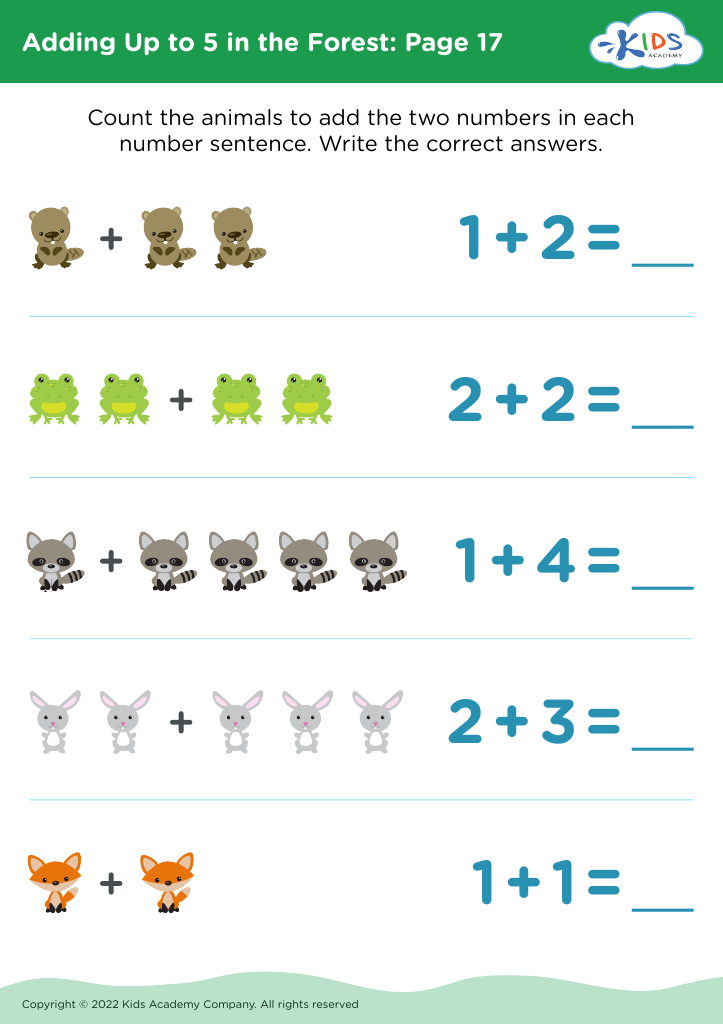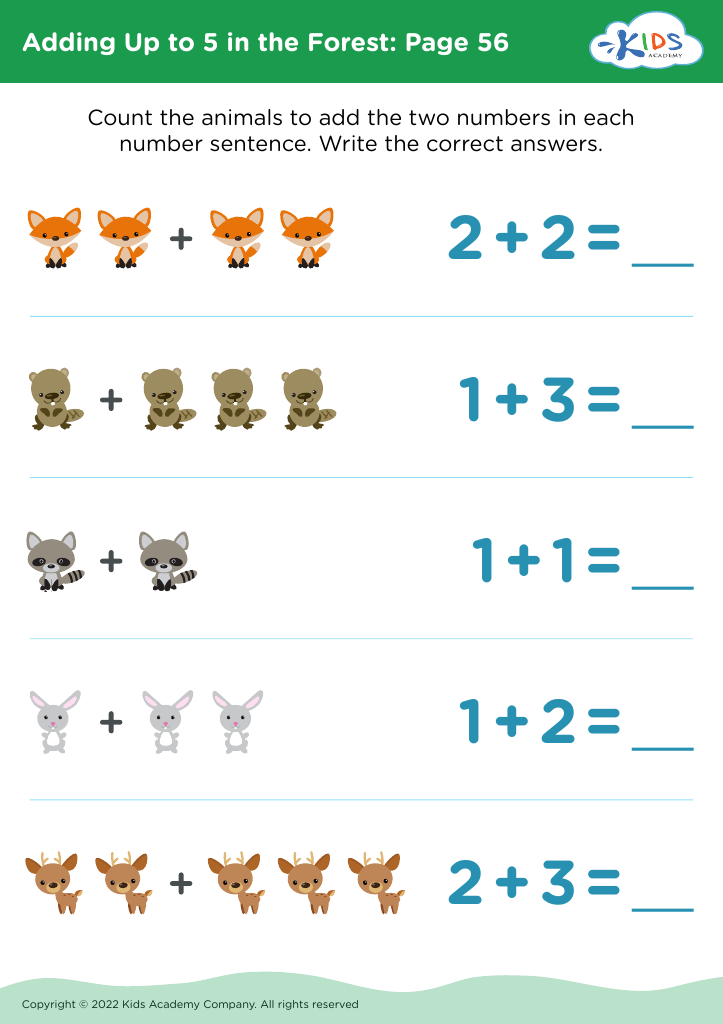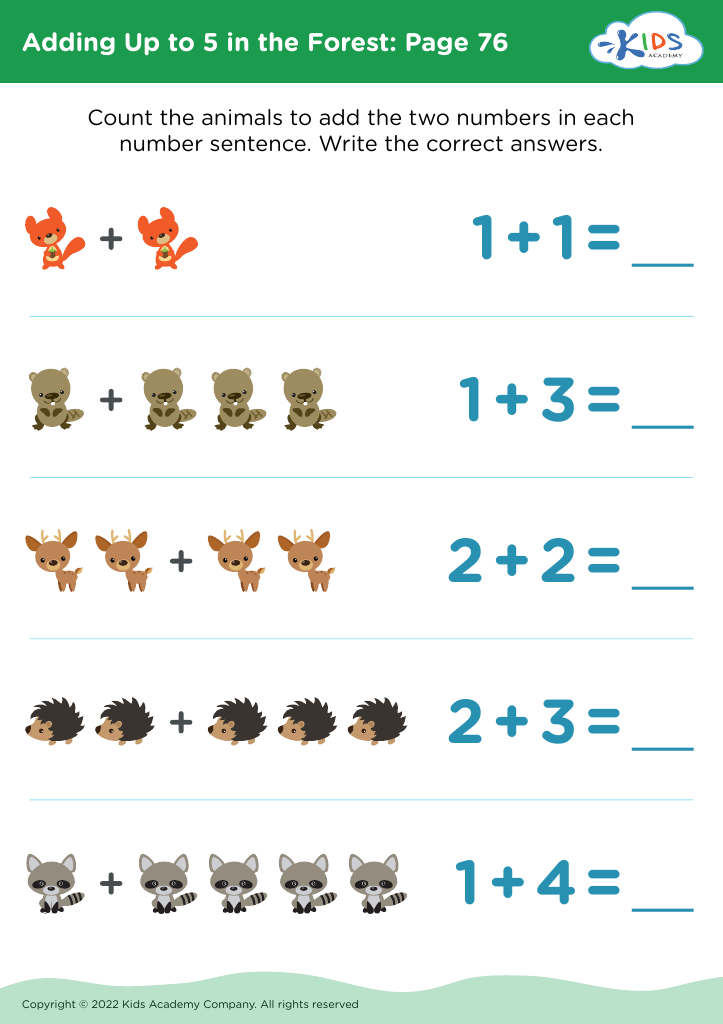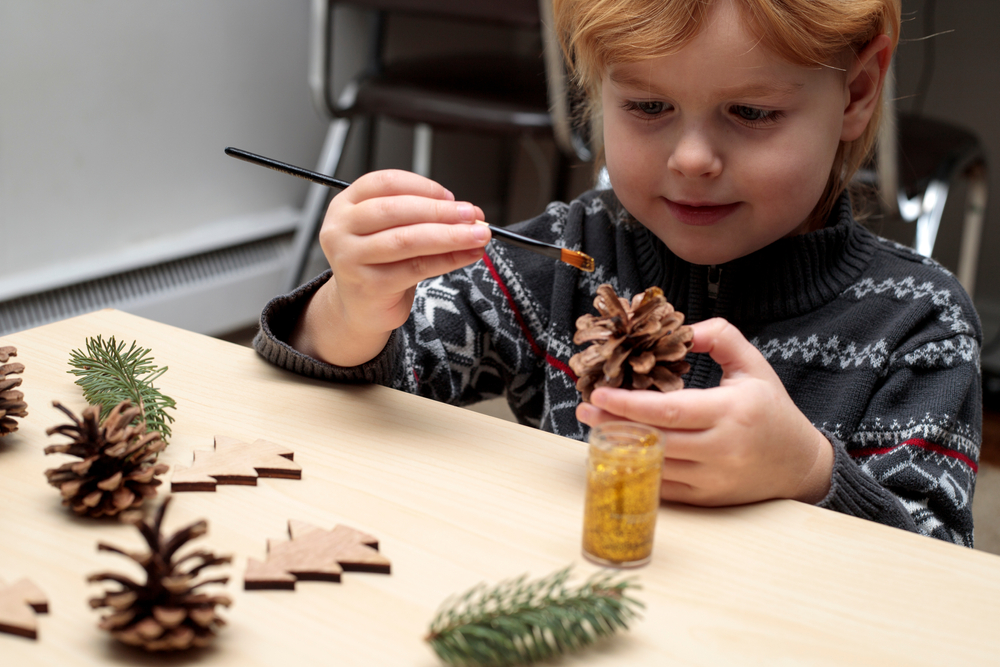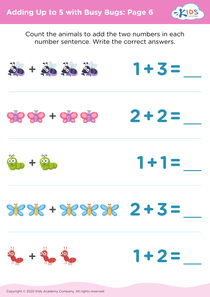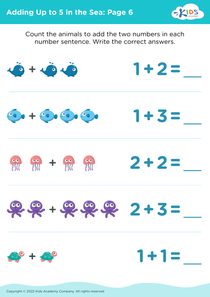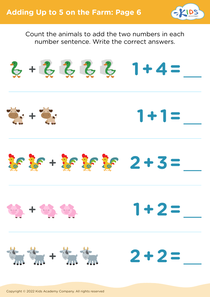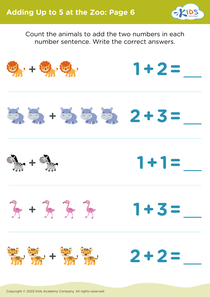Problem Solving Adding in the Forest Worksheets for Ages 4-6
3 filtered results
-
From - To
Introduce your little ones to the adventurous world of math with our "Problem Solving Adding in the Forest Worksheets" designed for ages 4-6! These engaging worksheets combine early math skills with an exciting forest theme, encouraging young learners to solve addition problems through imaginative storytelling. Kids will embark on a mathematical journey, helping forest animals collect items, count trees, and explore nature, all while developing their problem-solving abilities. With colorful illustrations and interactive exercises, your child will gain confidence in addition and critical thinking. Discover the joy of learning in the great outdoors with these fun, educational resources today!
Parents and teachers should care about Problem Solving Adding in the Forest for Ages 4-6 because it fosters essential cognitive development and foundational math skills in young children. During this stage of growth, children are naturally curious and eager to explore, making it an optimal time to introduce concepts of addition through engaging, real-life scenarios. Problem-solving activities set in a forest context not only captivate children's imaginations but also help them apply mathematical concepts to tangible situations.
Engaging with nature stimulates children’s creativity and encourages critical thinking as they encounter unique challenges—like counting animals or gathering objects in the environment. This blend of play and learning supports the development of perseverance and resilience, as children navigate obstacles and seek solutions. Furthermore, these activities promote collaboration and communication skills when children work together to solve problems.
Additionally, early exposure to math through stories and interactive lessons sets a strong foundation for later learning. By cultivating a positive association with math in such an engaging context, parents and teachers can nurture a love for learning, set the stage for academic success down the line, and create enriching experiences that enhance both cognitive and emotional growth.
